“You’re more of a teacher in a school library.”
-Thomas Worrell, Teacher Librarian at Phoebus High School
When it’s time to tour a school library, I reach out to as many schools as I can, trying to focus on those that are open for summer classes. I figure there’s a greater chance of librarians checking their emails. Two of them get back to me, the first being Mr. Thomas Worrell of Phoebus High School.
As always, I start with some website reconnaissance.
The school’s website, at https://phs.hampton.k12.va.us/phs-support-service/phs-library-media, is clearly geared towards serving students. It contains links to World Book, EasyBib, NPR, Gale Learning, Library of Congress, and more. It’s easy to navigate – there’s not much there. And there’s no alt text, an especially unfortunate detail for the links, which are images.
It lists staff: one Library Tech and one Teacher Librarian, with emails for each and a shared phone number. No online catalog. The high school website in general has a tour section, where one can take a virtual tour of the building, including the library. This is what drew me to Phoebus High School in the first place – if no one replied to me from anywhere, I could still use this to take a virtual tour. But Mr. Worrell got back to me, so the plan is on.
We’re in.
I’m told to park in the staff parking lot, where I notice reserved spaces for the principal and assistant principal. There’s apparently no need for any kind of placard, or at least they’re not enforcing it during summer. I wonder how it works the rest of the year.
Mr. Worrell meets me outside. It’s a big building; the inside is roomy, with lots of glass and transparency and huge, wide steps. Presumably there’s an elevator somewhere, but we take the stairs up to the second floor. And there we are.
It’s a similarly roomy space, with lots of chairs and tables. Along with the shelf height, it’s all pretty standard – neither particularly user-friendly nor unusually hostile. The space is welcoming, though I notice that the walls are pretty bare, which Mr. Worrell will later explain. There are no signs up besides the bare minimum of section headings, and one other area:
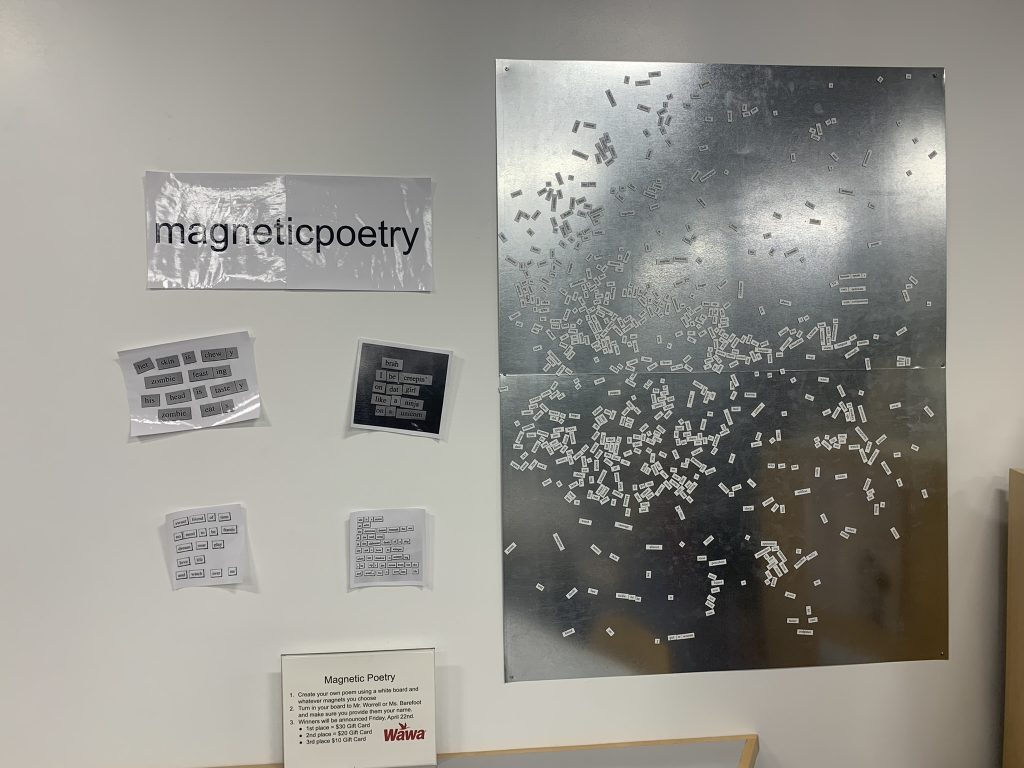
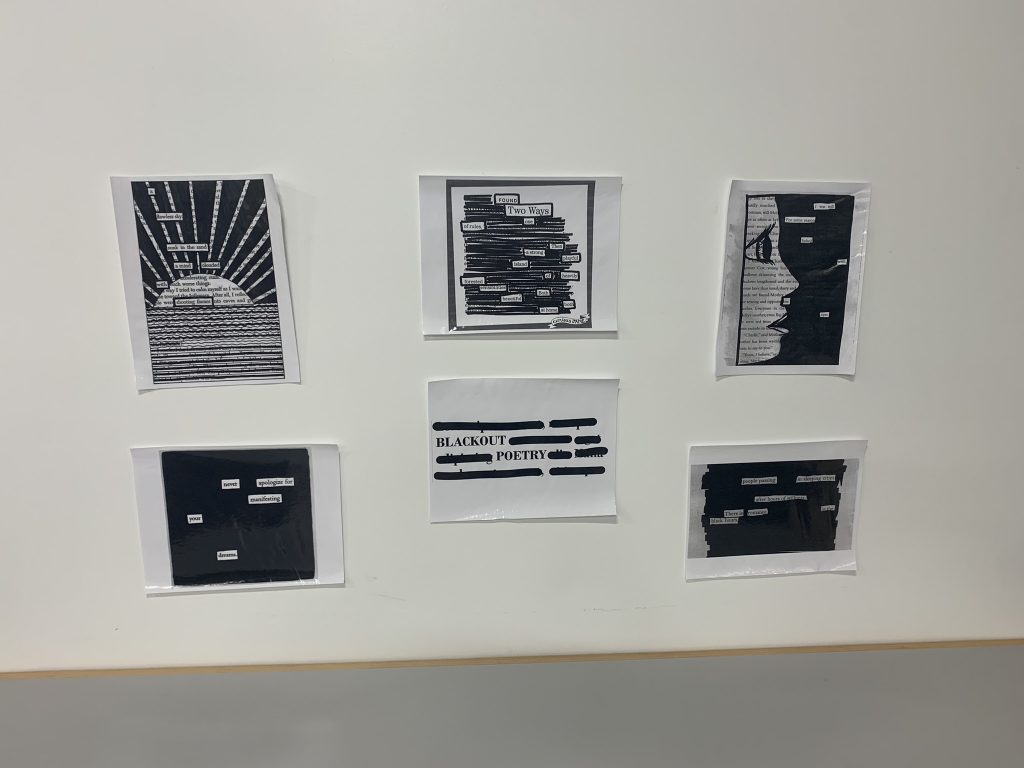
The poetry display. One area for magnetic poetry and another area for blackout poetry, and in the middle a shelf of poetry books. A sign proclaims a magnetic poetry contest with gift card prizes.
Throughout the rest of the library there are sections for fiction, nonfiction, and graphic novels/manga. As a lifetime fan of graphic novels who just finished ODU’S MLIS class on the subject, I am intrigued. A large circle of half-height shelves in the middle of the room contains more manga and another manga label.
There are collaboration rooms, with their own sign: “Students may not enter collaboration rooms without approval from Mr. Worrell or Ms. Barefoot.” Then a study room, with one of those signs that speaks to past experiences: “Used for academic purposes. Lights remain turned on. No eating or drinking. Students who don’t comply will be asked to vacate the rooms.”
I get to talking with Mr. Worrell. His background is in teaching middle school math; he has an MS from ODU in Education from before the MLIS program existed. He’s been a librarian at Phoebus High for four years now.
He explains that the library was renovated in 2020, and he’s waiting on news on a smartboard before he puts materials back on the walls. He’s not sure where they’re going to install it, but he’s looking forward to the technological upgrade.
As for the books, the manga circulates most. Right now Mr. Worrell is working on switching the section over from being organized by the Dewey Decimal System to being organized by title, since it’s hard to find anything, especially in the single graphic novels section. They use Destiny for their catalog, so he’s updating that. Fiction is already organized by author’s last name.
The nonfiction barely circulates at all. Some of the self-help, pop psychology, and true crime, but nothing else. He’s weeded it to a quarter of what it was when he got there.
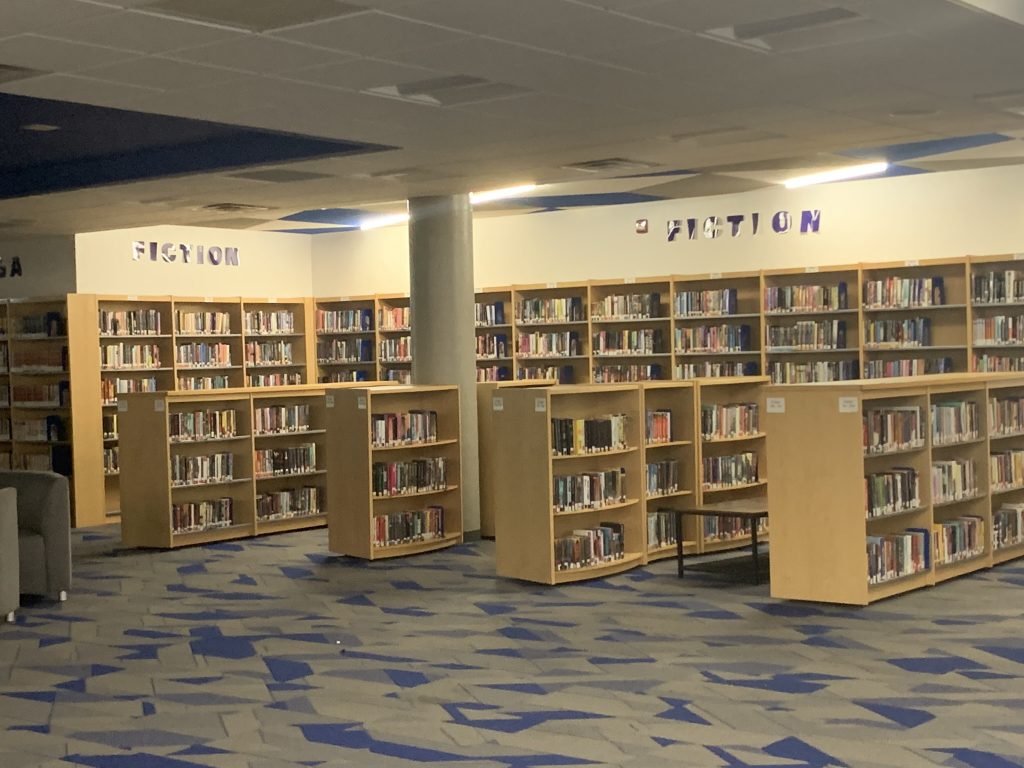
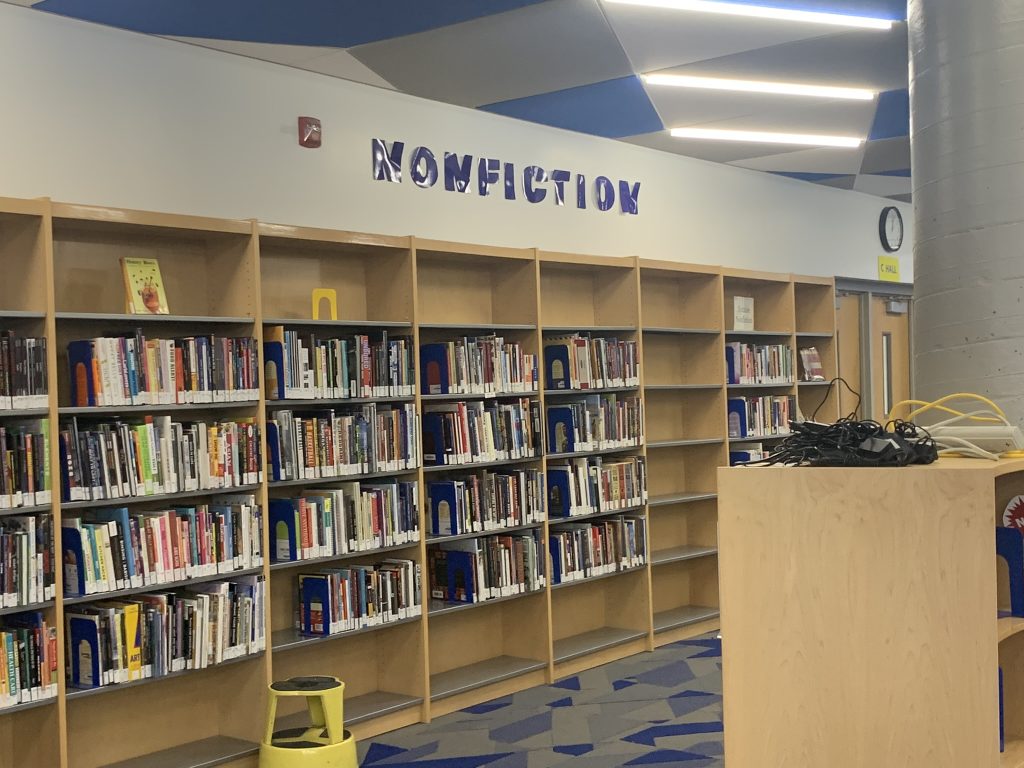
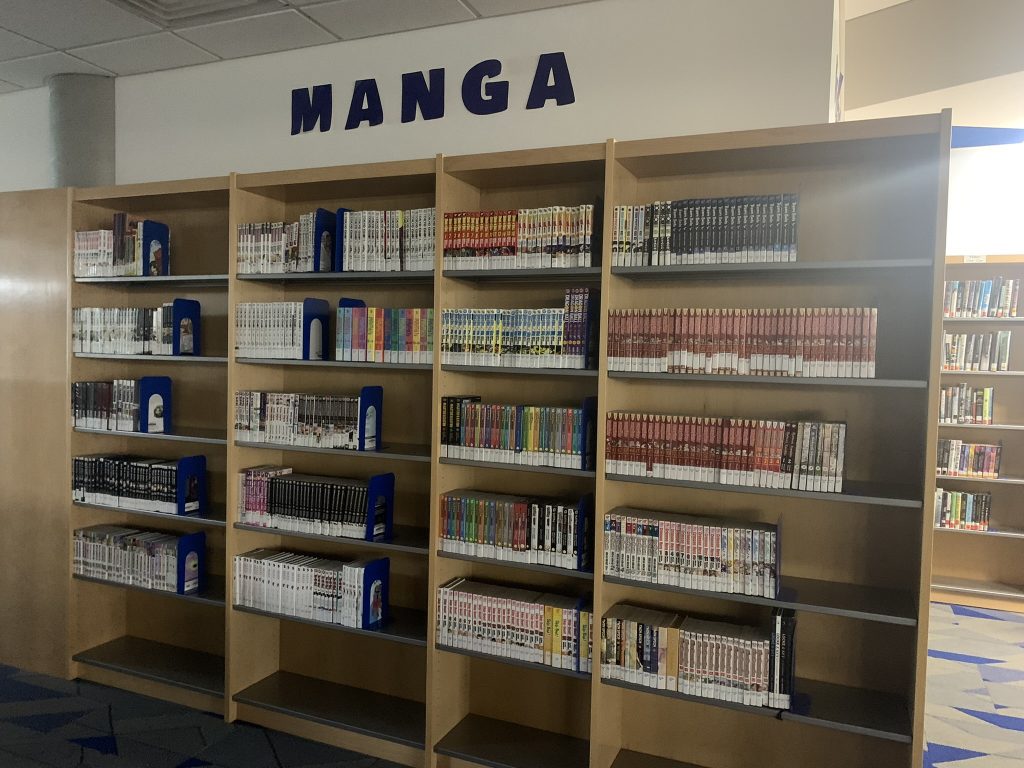
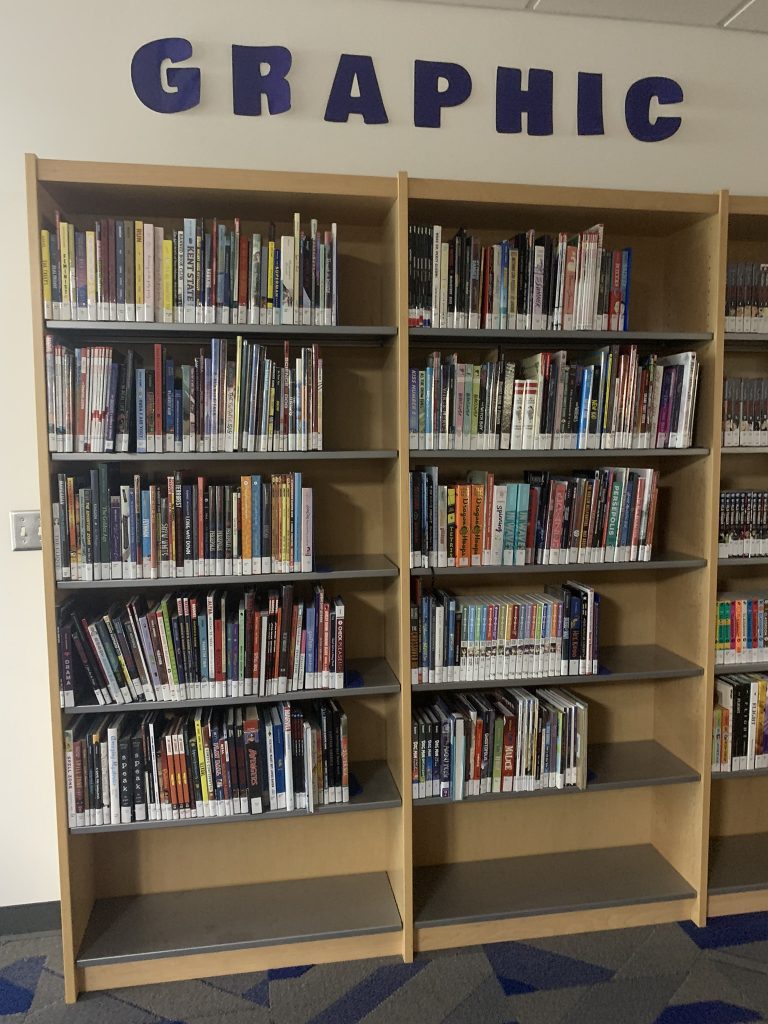
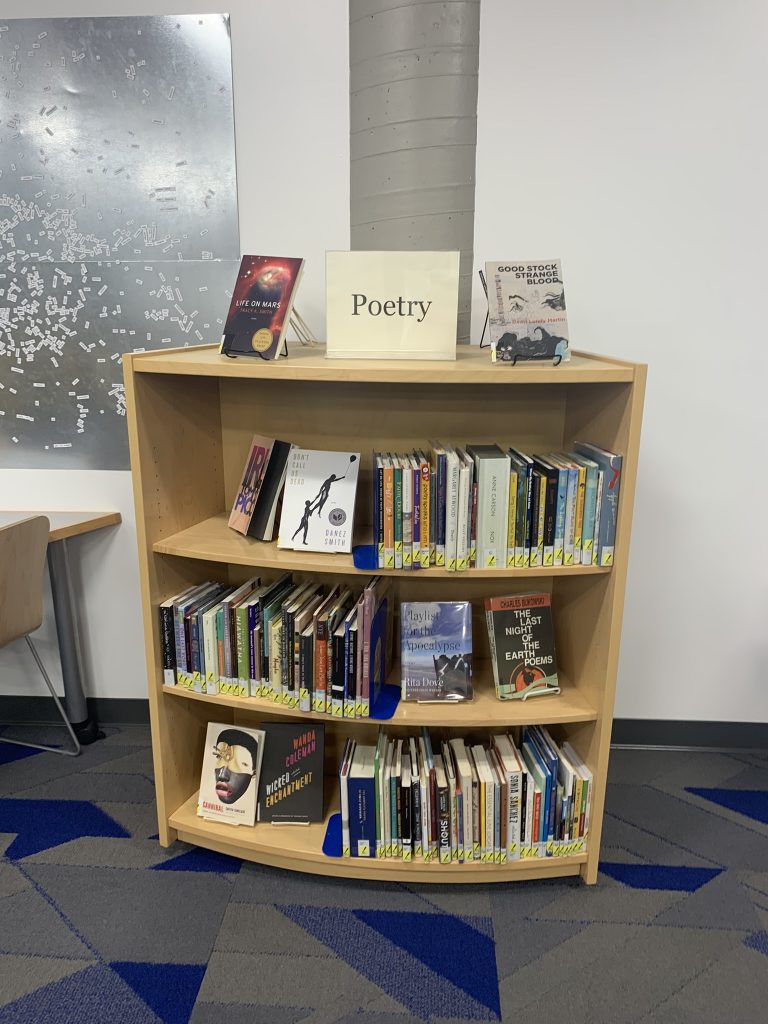
He also handles technology as part of the library. There’s a student printer, though it’s rarely used these days, as assignments are handed in online. He’s also in charge of taking broken Chromebooks and issuing new ones. He oversees the computer lab across the hall.
I ask about use of the library as a communal space, remembering that being one of the highlights of the library from my time. Students are not allowed to be in the library after dismissal here unless they are with a club. Sometimes the groups that host tours for the academies will meet there. Mr. Worrell coaches golf and will occasionally have them over.
Then I ask about digital media, and he says that now that streaming is so popular, they’ve pulled their DVDs and DVD players. They have loaner computers for when kids forget their Chromebooks at home. They do circulate ebooks. iPads used to be popular, but now kids all have their own devices.
He takes me into a storage area to show me some more of the tech they have. This is the area of limited access, where staff assistance is needed. They have circuit kits, programmable robots, a 3D printer, and a laminator – none of these can be checked out and they must stay on school grounds. The most frequently used items are the breakout.edu lesson kits, which thrill me given the years I spent working at an escape room.
He sells earbuds and phone charges for cheap in order to raise money to buy things like the printer. He wrote a grant to give out the gift cards for the poetry competitions, which are always something simple – if not magnets or blackout than haikus, or six-word memoir. Anything high school students will actually be willing to engage with. He explains that it’s difficult these days – poetry, he tells me, is considered desperately uncool.
Overall, the library is clearly aimed at student use, and incredibly standard. The only particular audience welcomed or not welcomed are aspiring poetry writers who might enjoy the poetry display. The magnetic poetry is probably useful for beginning English speakers.
It’s summer, so I didn’t observe any patrons using the library. It’s hard to comment on diversity – Mr. Worrell is white, and most of the other staff members we passed were Black. But there were no students.
The mission of the library is honestly more apparent on the website, with its links to various services, than it is in the library itself. But there are some signs. Rubin and Rubin quote a report identifying major themes of educational change, saying, “Learners are creators. The advent of makerspaces, classroom configurations that enable active learning, and the inclusion of coding and robotics are providing students with ample opportunities to create and experiment in ways that spur complex thinking” (Rubin & Rubin, 2020, p. 151). This really resonated with me after seeing the technology available at the library. In addition, the sections are very user-friendly, and the immense graphic novel area is a nod to student use.
I was excited to see that graphic novel section, as well as all the technology, particularly the breakout kits. I was a bit disappointed by the (understandable) lack of signage or decoration on the walls. I’d be excited to see what it looks like once the renovations are complete.
That’s one great thing about school libraries – you can get very creative. After all, you’re inspiring generations of future readers, not to mention those who could potentially become librarians themselves.
References
Hampton City Schools. (2020). PHS library media. Phoebus High School. https://phs.hampton.k12.va.us/phs-support-service/phs-library-media
Rubin, R. E., & Rubin, R. G. (2020). Foundations of library and information science (5th ed.). ALA Neal-Schuman.
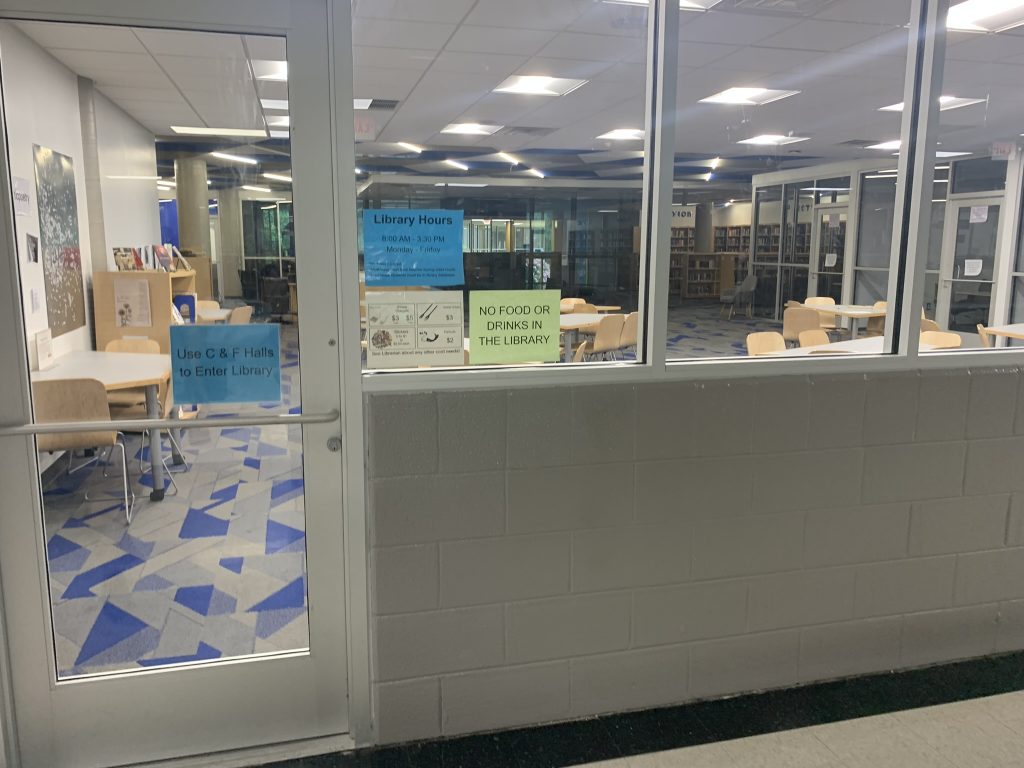
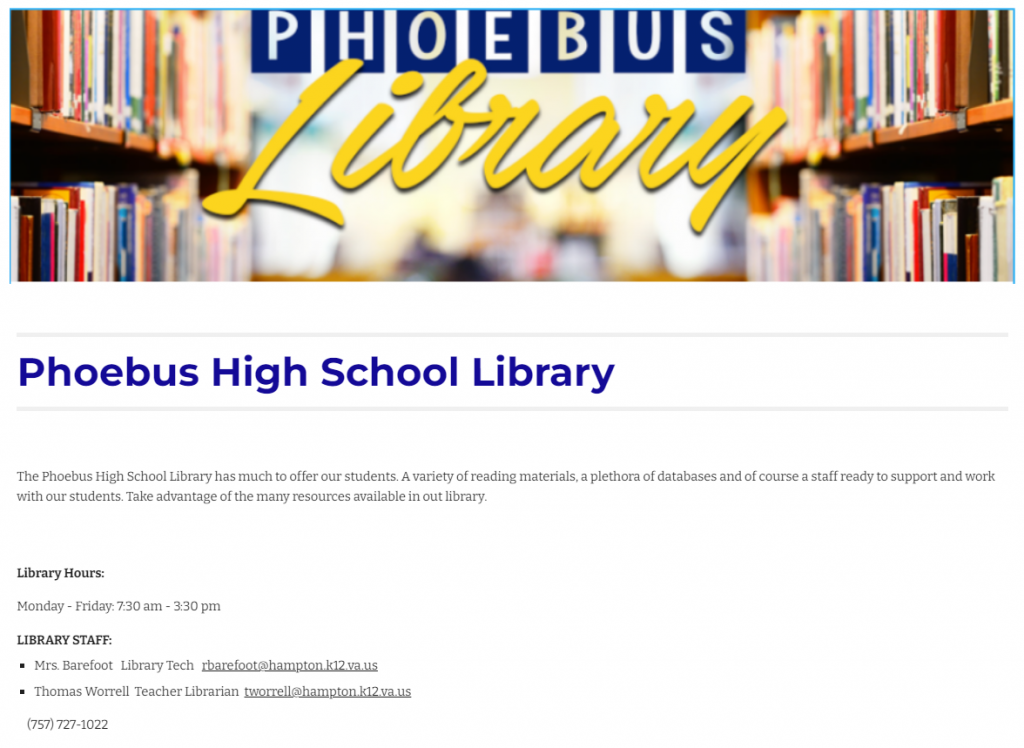
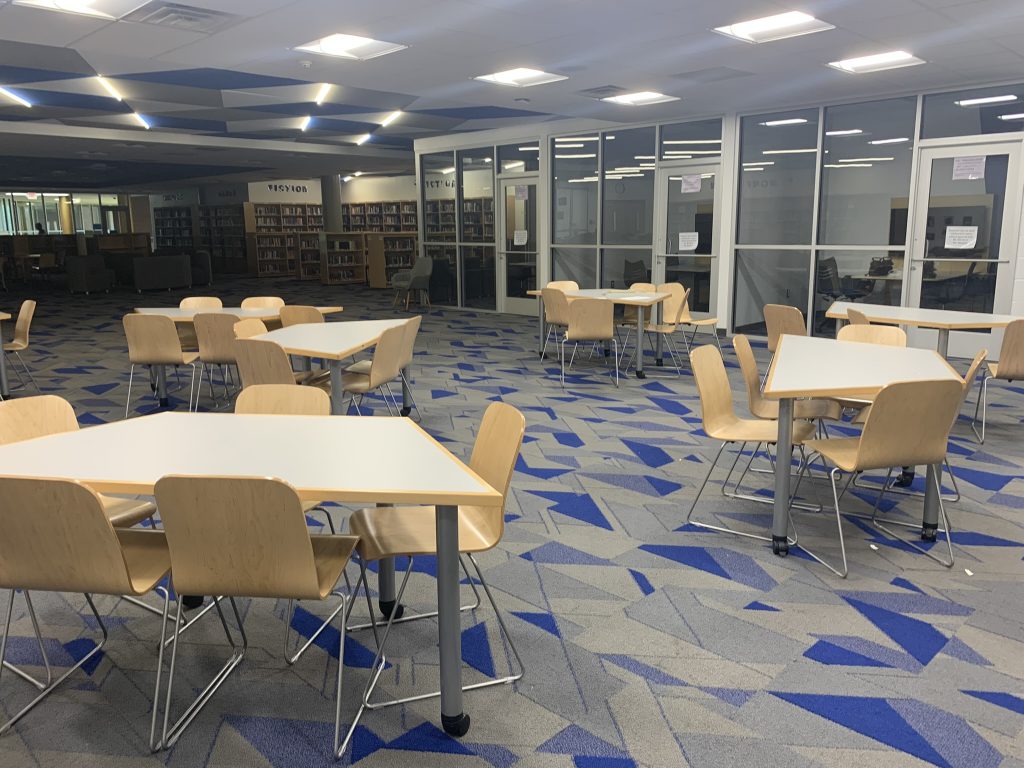
Hi Maeghan!
Thanks for sharing your visit to Phoebus High School Library. It sounds like your strategy of looking for a school with summer school in session was a good idea. It’s interesting to hear about a high school library, as most of my experience in school libraries have been in elementary school libraries. It’s interesting that you noted that there was nothing on the walls besides the blackout poetry. I wonder if that could be at all because your visit took place during the summer when school staff often have to take things off the walls for paint touch-ups/cleaning. It’s great to hear that fiction is circulating there, but I wonder if a collaboration more with a teacher on a research project might increase the number of nonfiction items that circulate. Again, my experience is with elementary school but nonfiction is the more popular choice to check out among my 2nd graders, and they would be devastated to hear that our librarian weeded out such a large majority of the collection. It sounds like he is wearing many hats as the school librarian, especially with handling technology. I know he would have been quite busy toward the end of the year this past school year with Chromebooks that needed to be exchanged after almost an entire year of traveling back and forth from home to school each day. Thanks for sharing about the secondary school library!
I think it would be super interesting to visit this library again only a few months from now to really see how students use it. Over the summer, it looks a little bit like a prison (especially with half the lights off and all of the signage about what you can’t do!). It seems like a shame that students can’t be in the library after school unless they’re part of a club—I suppose it’s a staffing/chaperoning issue but having the library be a communal, relaxed space might lead to more engagement from the students. One of the great services libraries can provide, in theory, is space to just _be_ or play or stumble across something new. It sounds like it would also be helpful to have more support around technology so that those areas could be less restricted, too. Mr. Worrell seems like he knows his patrons well and is doing his best to cater the space to their needs. If there was a chance for more personnel (or maybe some student volunteers/interns), maybe he could wear fewer hats!
Super cool school library! It was interesting for me to see the difference between a middle school and high school library. I really like the magnetic poetry. That is a good way to get students coming back to the library! It doesn’t surprise me that the most checked out items are from the Manga collection. The rooms do seems a little dull but I’ll bet that changes when school starts up and there isn’t just a summer school session.
Wow! Mr. Worrell is a very busy with re-assigning his collection, maintaining the technology within his care, selling items almost like a school bookstore and teaching. Talk about awesome and scary at the same time! Job creep scares me. This public school has a great initiatives and technology in place for its students, but it seems understaffed. Thanks for sharing.
Thanks for sharing visit with the Highschool. Boy how libraries have changed since when I was in school. Back then the library had tables and stacks of rows of books. No one used the library except students who were studying and avoiding eating lunch in the cafeteria. The technology the school has for the students is great. Conducive to learning. They are teaching the future leaders and makers of tomorrow.
I find it interesting that the library has trapezoid desks. I haven’t seen desks like that before, let alone in a library. I like how there are subject headings showing students and faculty where certain genres of books are located. I also like how there is a poetry display in the library. It’s nice to display the work of students to show their creative side and talent to others. I’m surprised that manga is circulated the most at the Phoebus High School Library. I didn’t think that manga would be popular among the students.